The Economics and Statistics Division maintains archives of previous publications for accountability purposes, but makes no updates to keep these documents current with the latest data revisions from Statistics Canada. As a result, information in older documents may not be accurate. Please exercise caution when referring to older documents. For the latest information and historical data, please contact the individual listed to the right.
<--- Return to Archive
For additional information relating to this article, please contact:
August 11, 2020HOUSING STARTS, JULY 2020 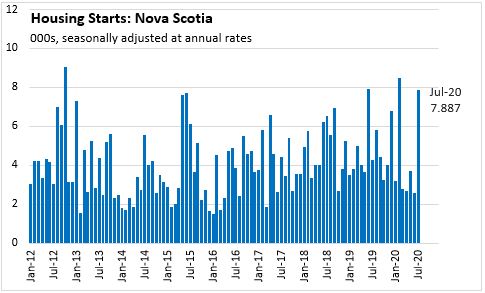
Nova Scotia's housing starts (seasonally adjusted annualized rate) totalled 7,887 in July 2020, up by 204.4 per cent from 2,591 in June 2020. Compared to July 2019, Nova Scotia housing starts were up by 83.9 per cent.
Housing starts up by 368.8 per cent in Halifax from 1,428 in June 2020 to 6,695 in July 2020. Halifax starts were up by 163.3 per cent compared to July 2019.

Outside Halifax, Nova Scotia's housing starts up by 2.5 per cent from 1,163 in June 2020 to 1,192 in July 2020. Compared to July 2019, housing starts outside Halifax were lower by -31.7 per cent.

The six-month moving average of housing starts in Nova Scotia and Halifax shows similar trends. Following an upwards trend in summer months, housing starts have been trending down since fall 2019. The trends outside Halifax are different, with a rise in starts over the second half of 2019 followed by a decline since the start of 2020.
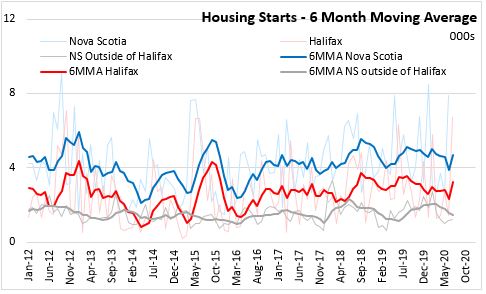
In urban areas, housing starts for multiples are generally higher than for singles with greater variability month-to-month. The six-month moving average for singles has been increasing since the first quarter of 2019. The pace of multiple starts in urban areas has been more volatile, with peaks in summer of 2018 and summer of 2019.
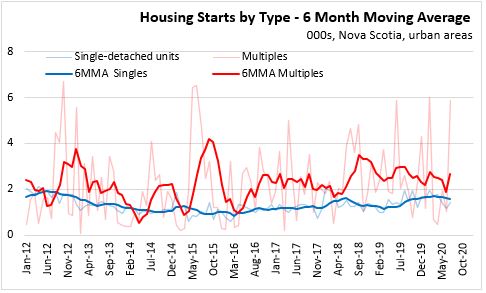
Nationally, housing starts increased 15.8 per cent to 245,604 in July 2020 compared to 212,095 in June 2020. Among all provinces, Saskatchewan posted the highest monthly increase (+219.3 per cent) while Prince Edward Island experiences the largest monthly decrease (-69.4 per cent) in housing starts in July 2020.

Compared to July 2019, housing starts were up 11.1 per cent across Canada. Three provinces reported annual housing starts were down with Prince Edward Island posting the largest decline (-65.5 per cent). Housing starts were up in seven provinces led by Saskatchewan posting the largest increase (+417.0 per cent).
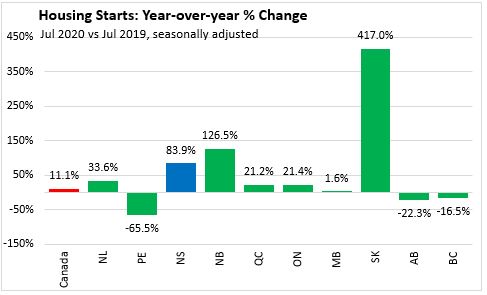
Between June and July, there was a significant rebound from lower housing starts in Saskatchewan, Nova Scotia and New Brunswick. Starts decline in Prince Edward Island and Manitoba, though starts had been elevated in these provinces in June.
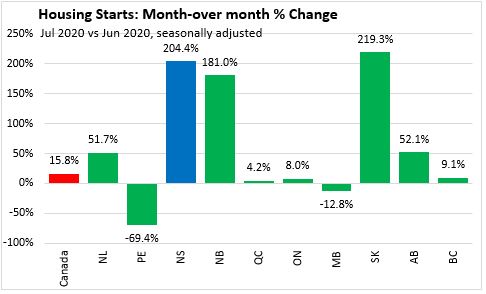
During the COVID-19 pandemic, housing starts declined in all provinces, falling below 10-year averages (2010-2019). From June to July, housing starts were up in all provinces except Prince Edward Island and Manitoba, which both experienced spikes in housing starts during June.
July housing starts for Canada were 22.1 per cent above their 10-year average and 7 of 10 provinces reported above average housing starts. The largest increases in housing starts (relative to the 10-year average) were reported in New Brunswick (164.8 per cent), Nova Scotia (88.7 per cent) and Quebec (44.9 per cent). Housing starts in July were below 10-year averages in Newfoundland and Labrador (-57.9 per cent), Alberta (-26.4 per cent) and Prince Edward Island (-21.8 per cent).


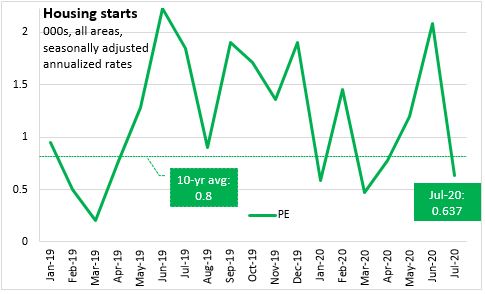


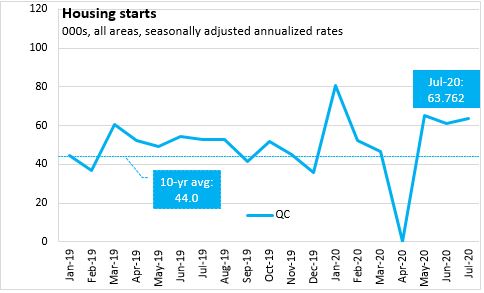
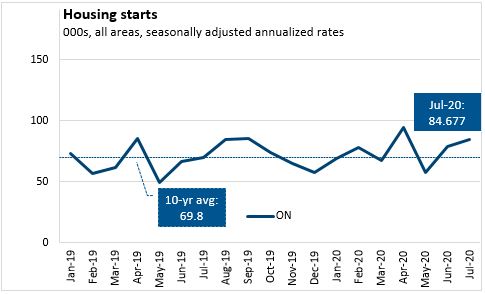
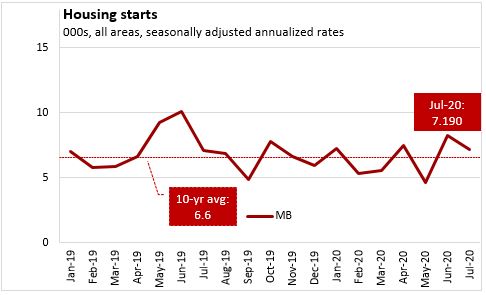


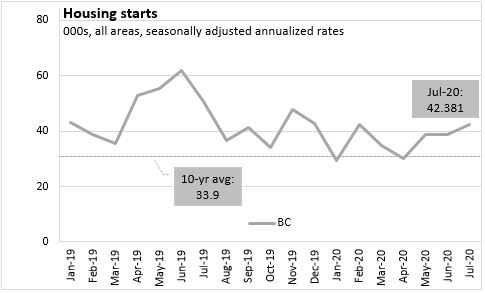
During the COVID-19 pandemic, comparisons of year-to-date averages and sums do not show Nova Scotia’s rapidly-changing economic situation. The DailyStats will focus on year-over-year comparisons, comparing one month with the same month in the prior year. Where possible the DailyStats will make comparisons of seasonally adjusted data from the pre-COVID-19 period (January and February 2020) with the period during which COVID-19 measures were in place from March 2020 onwards.
Note: Urban areas are defined as areas over 10,000 people
Source: Statistics Canada, Table 34-10-0158-01 Canada Mortgage and Housing Corporation, housing starts, all areas, Canada and provinces, seasonally adjusted at annual rates, monthly (x 1,000)
Table 34-10-0156-01 Canada Mortgage and Housing Corporation, housing starts in all centres 10,000 and over, Canada, provinces, and census metropolitan areas, seasonally adjusted at annual rates, monthly (x 1,000)
<--- Return to Archive